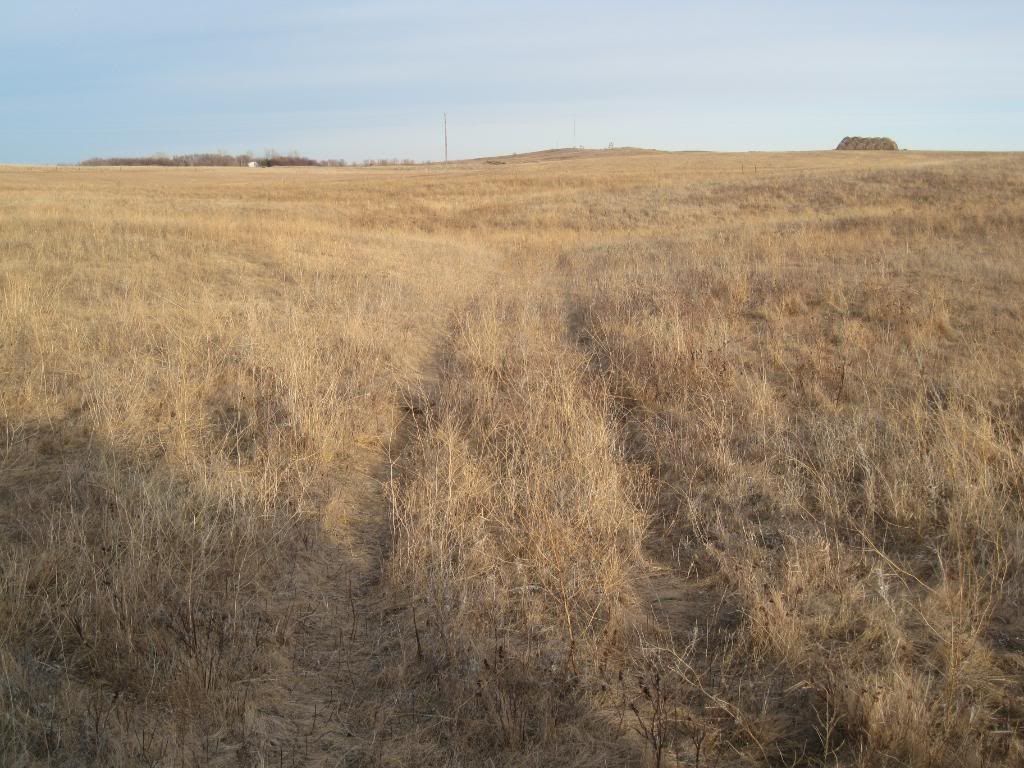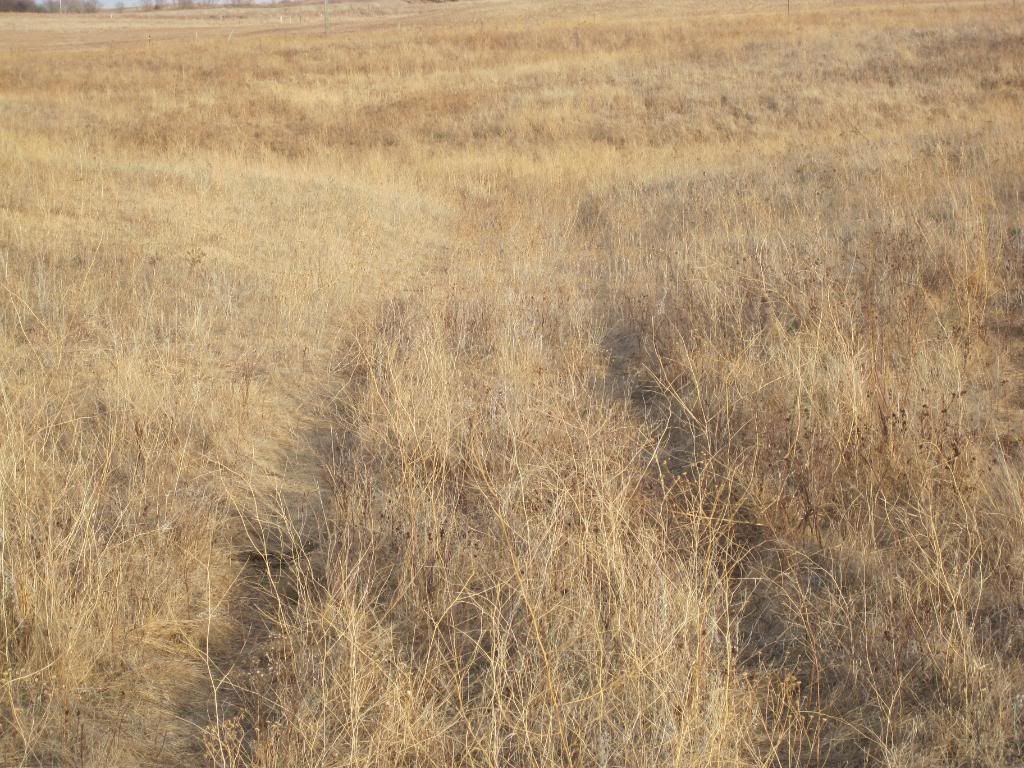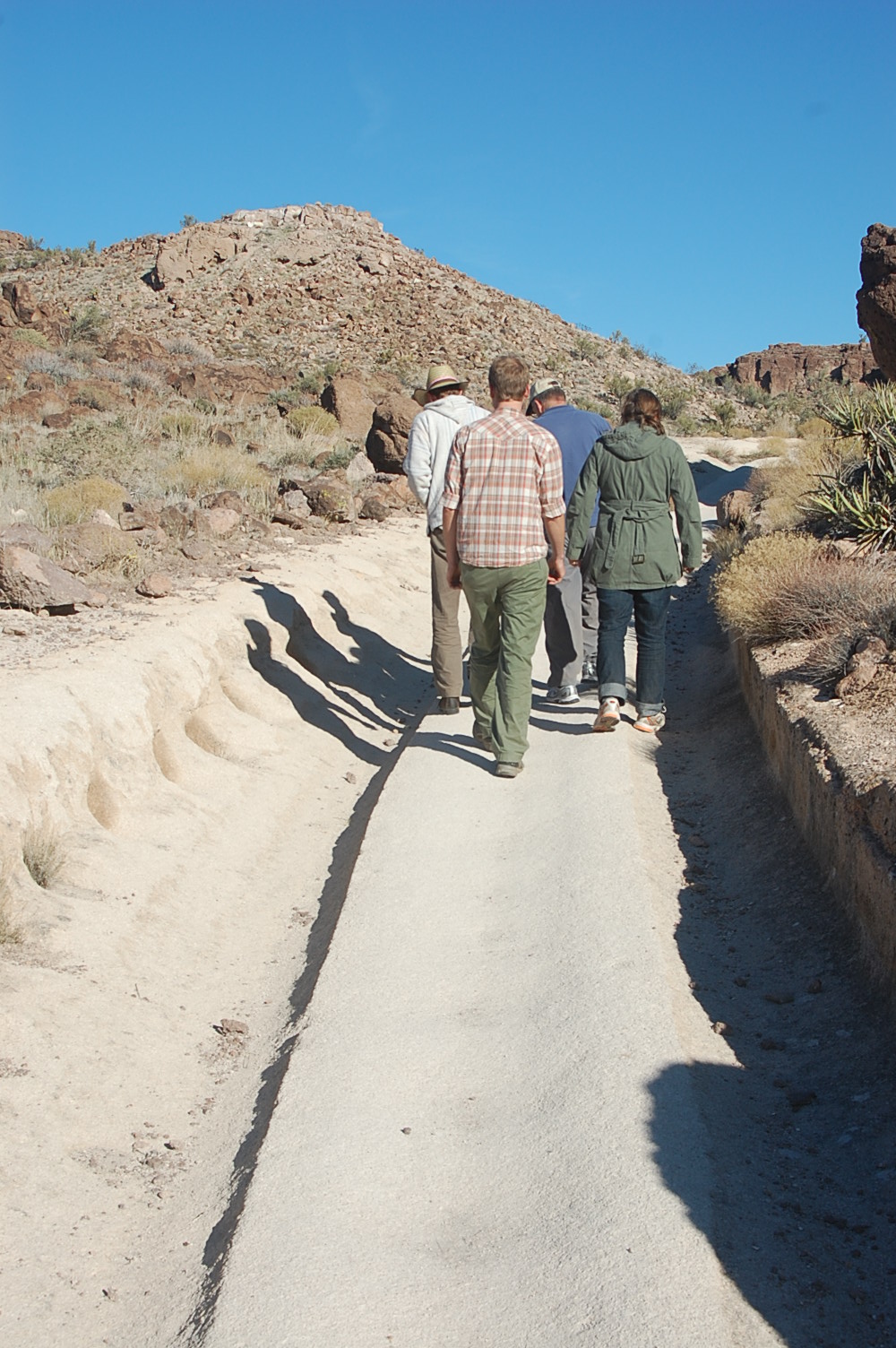Greg
This wagon route went from Fort Abercrombie, ND to Colombia SD. This was the first permanent fort built in ND, on the Red River, in 1857, so it was used as a transportation hub for military outposts, and early settlements, such as Colombia. There were other wagon routes, but these tracks are the Colombia route. This fort was attacked by the Sioux in 1862, called The Dakota War of 1862. It lasted 6 weeks. All the regular soldiers were called to duty in the Civil War, so it was manned by Minnesota volunteers. I don't think there were large numbers of casualties. This wagon route branched right about where I took the photo and headed south to a trading post that is on
a friends land. It is still there in ruins. Quite a few artifacts have been found in this area, due to it being an old trading area. There isn't anything significant about Colombia, although it was going to have the railroad come through, but when speculators bought the land and then tried to sell it at high prices to the railroad, the railroad moved its route!! So much for Colombia. Its barely there anymore.
Gary
ps. I went to google maps, and knowing just where to look, I was amazed to see that the wagonroute could be seen by satellite.
Announcement
Collapse
No announcement yet.
Wagon train ruts
Collapse
X
-
[quote=SDhunter post=37668]Greg, I have no idea how many wagons passed that way, but now that you asked, you've
made me wonder. I think I'll have to try and research that. It is something how long
they can last if not disturbed by the plow. I think one thing that helps, is that the cattle
continue to use them. That's why the grass is mashed down a little.
Would be interesting. You also mentioned supply route. Any idea to where? Town, fort, reservation?
Just wondering
Leave a comment:
-
Greg, I have no idea how many wagons passed that way, but now that you asked, you've
made me wonder. I think I'll have to try and research that. It is something how long
they can last if not disturbed by the plow. I think one thing that helps, is that the cattle
continue to use them. That's why the grass is mashed down a little.
Quite the ruts in that stone as well. Took alot of wagons to do that.
Leave a comment:
-
Amazing those ruts are still there! + - 140 years later! How many wagons passed over that same trail, headed West?
Jack, got a picture for ya:
These are just outside of Kingman, Az. Ore was mined and wagons used to move the ore uphill. This is all solid rock. Note the rock that is gone at intervals along the side. Was told they put smaller logs through the wheels and set in these slots in the rock to keep the wagons from rolling downhill!
Leave a comment:
-
Wagon train ruts, thats neat these marks in this rock are from ropes where mules were pulling canal boats on the C&O, this is at Great Falls VA. just outside of Washington DC., they were building the canal and the B&O railroad at the same time, raceing to Harpers ferry W.VA. the best place to pass on to Ohio the canal got there frist, and it all ended up in court, they worked it out to where when a train got to harpers ferry, it unhooked from the cars, went on to the other side, then the mules pulled the train cars to the other, hooked up again and on to Ohio, i think the goverment would do it just that way today ts


Leave a comment:
-
Jack, Those would be some ruts. I forgot to mention, but if you
look ahead at the ruts, you'll see the little ridge cut through by
the ruts. They've made a pass right through the ridge. That took
some time too. Too bad you don't have the pictures.
Gary
Leave a comment:
-
There was a pace I used to visit when I was a kid near Post Texas where there were real deep ruts in solid stone where the wagons went down a steep hill and the deep ruts were from them locking the brakes and the wheels skiding down the hill. Wish I had a picture of this.
Jack
Leave a comment:
-
Wagon train ruts
Here are some old wagon ruts from early settlers in South Dakota.
This was a supply train route used in the late 1800's


Tags: None


Leave a comment: